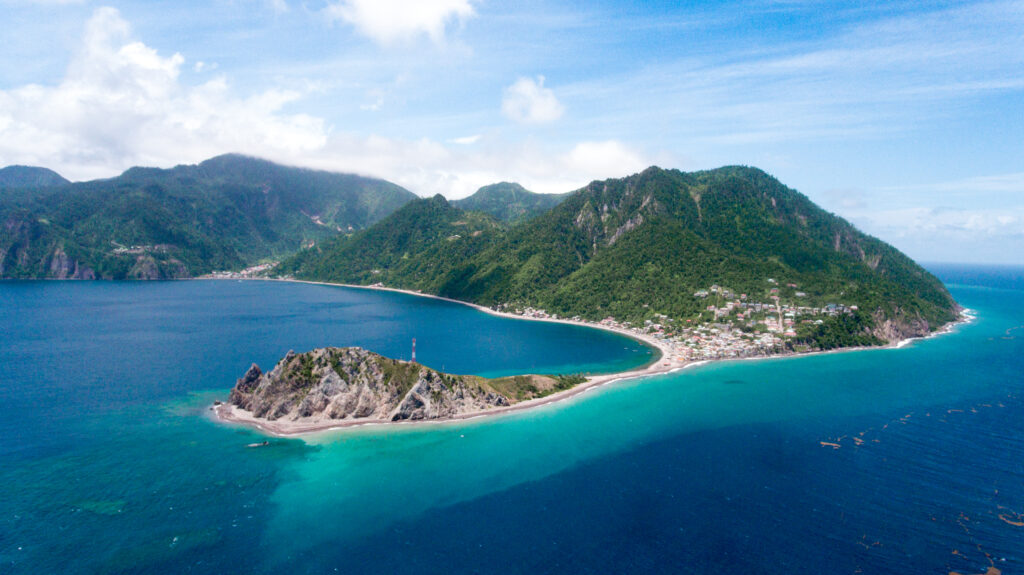
Scotts Heads
Description
Located in south-west Dominica, the Soufrière-Scotts Head Marine Reserve is a bay originating from a vast submerged extinct volcanic crater. The reserve covers an area of around 6 to 7 square kilometres, bordering a coastline of mountains and hills. With such a volcanic landscape, it’s not surprising that the seascape is spectacular. Underwater pinnacles, walls and large underwater boulders form a variety of exceptional dive sites throughout the reserve’s perimeter. These sites include: Crater’s Edge, Scott’s Head Pinnacles, L’Abym, Dangleben’s and Champagne reef attract divers from all over the world!
One of the most astonishing spots is Champagne reef, which is proof of the effects of volcanic activity and geothermal energy in particular: bubbles of volcanic gas rise from the bottom of the water! These bubbles are reminiscent of the champagne that gives this spot its name. In this area, the colour of the reef changes to golden and the volcanic bubbles give off a heat that is more than unexpected in the open sea.
The marine reserve was created to avoid conflicts of use between traditional fishing in the villages of Scotts Head and Soufrière and the diving tourism that was emerging there.
Biodiversity
The Soufriere-Scott’s Head Marine Reserve is one of the most pristine diving environments in the Caribbean, featuring an adjacent fringing coastline, coral reef systems, underwater fumaroles and steep underwater drop-offs. It is a site for schools of migratory coastal pelagic fish such as jacks, sardines and mackerel, and for cetacean species such as spinner dolphins and sperm whales.
Closer to the coast, the seabed is exceptional, with fish, crustaceans and molluscs of all types and colours, both juvenile and adult. You may also come across the Caribbean coin (Cyphoma gibbosum), a remarkable species of gastropod mollusc.
Ecotourism potential
The SSMR (Soufrière/Scotts Head Marine Reserve) stretches from Soufrière and Scotts Head to Anse Bateau, near the village of Point Michel. Divided up to allow fishermen and divers to enjoy the site, it is organised as follows:
- To the west of the Scotts Head peninsula, Trou Sable Bay is ideal for diving. The coral reef extends down to around 15 metres, and the seabed slopes down vertically to reveal a wall of coral, sponges and gorgonians for you to appreciate.
- In the centre, the area is more degraded, but the quantity of fish is good and suitable for fishing.
- Further north, from the beach in the village of Soufrière, is the ‘Champagne reef’, with its sulphurous bubbles at depths of up to 18 metres, where many juvenile fish can be seen in what is known as a nursery area. ‘Labim’, further to the north, is also ideal for diving due to the beauty of its seabed.
The bay is the crater of a submerged extinct volcano that plunges to great depths and is characterised by a series of geological features that make it one of the best diving sites in the world. The richness of the biodiversity and the originality of the seabed make it an essential spot to visit during a stay in Dominica.
